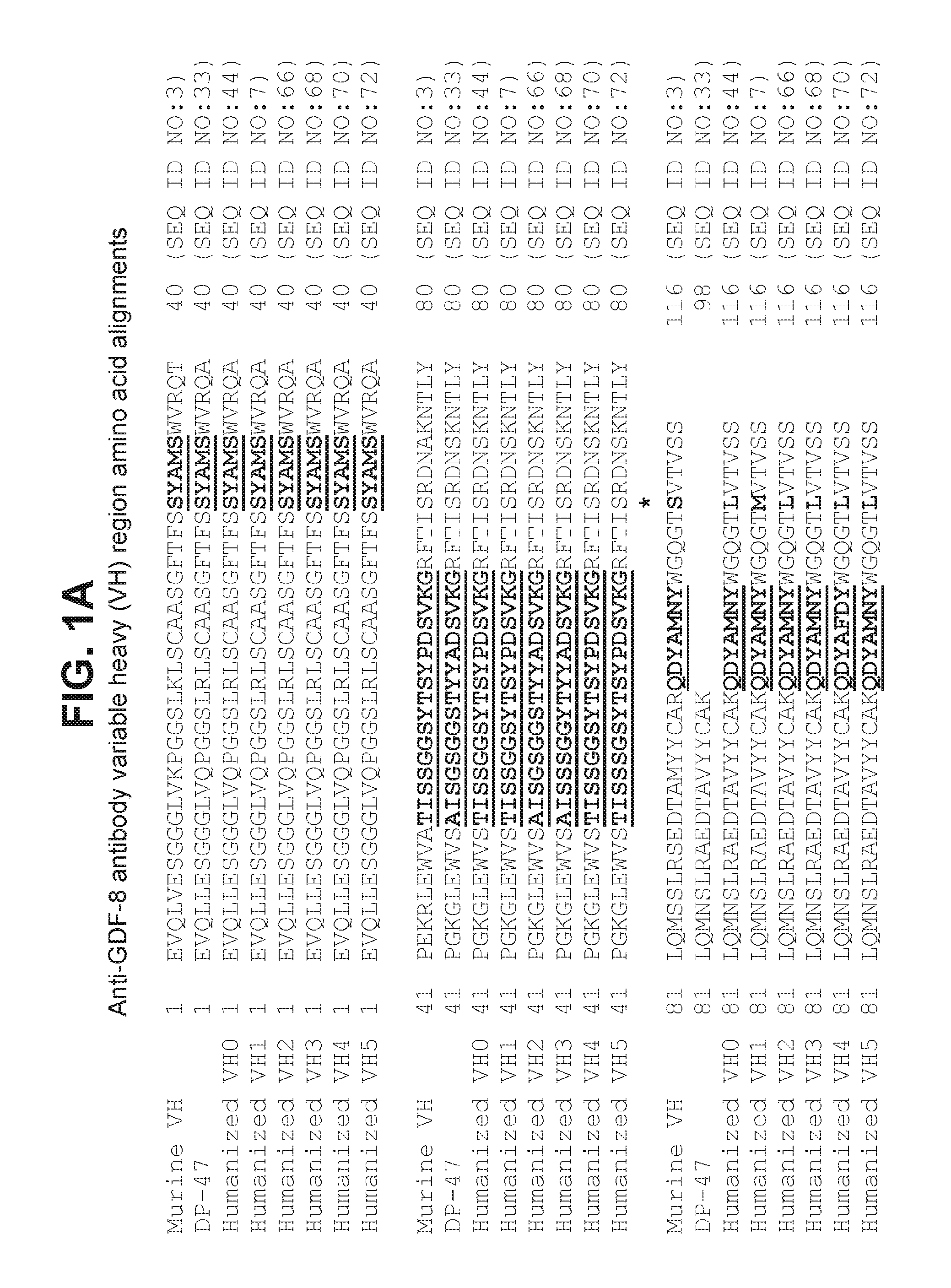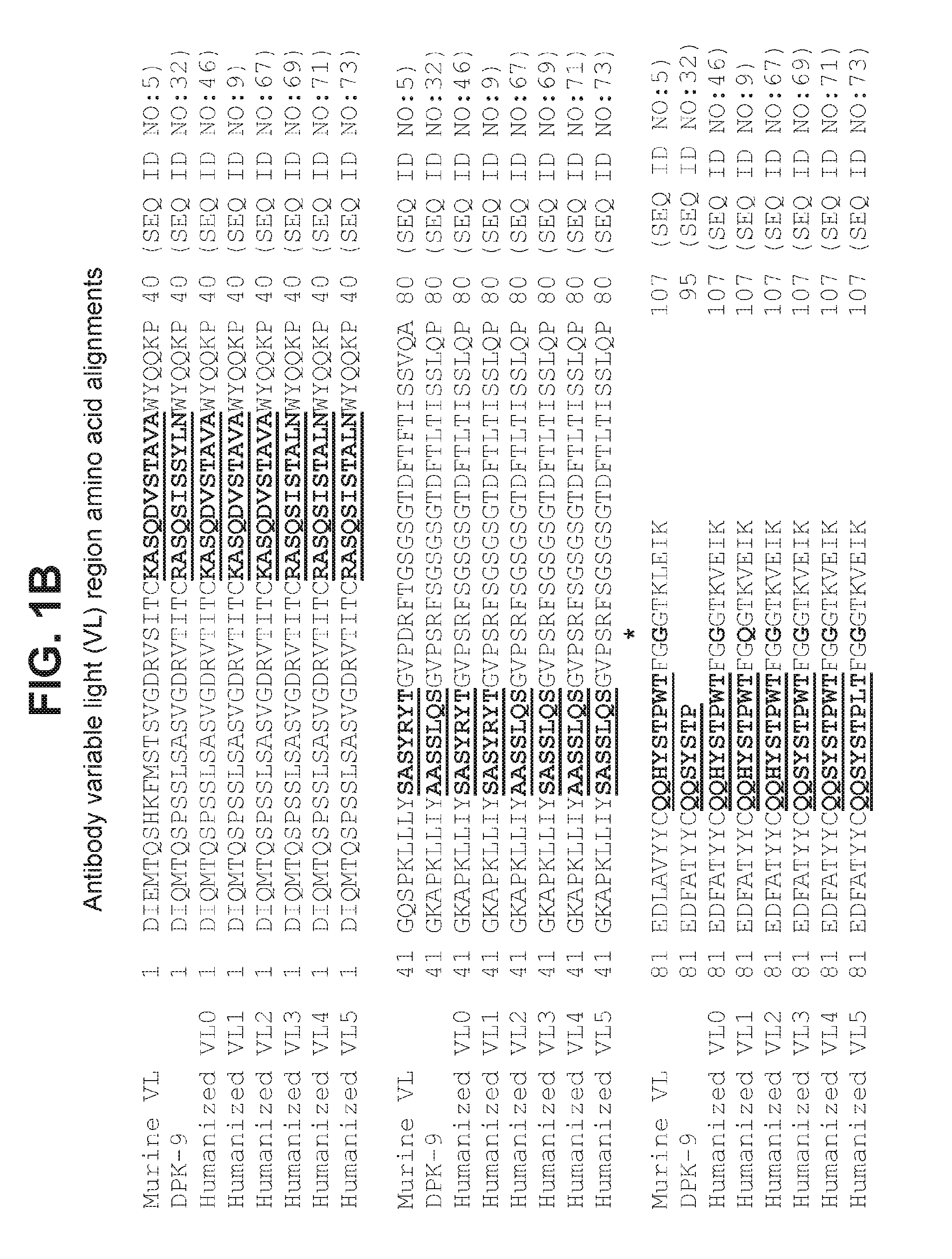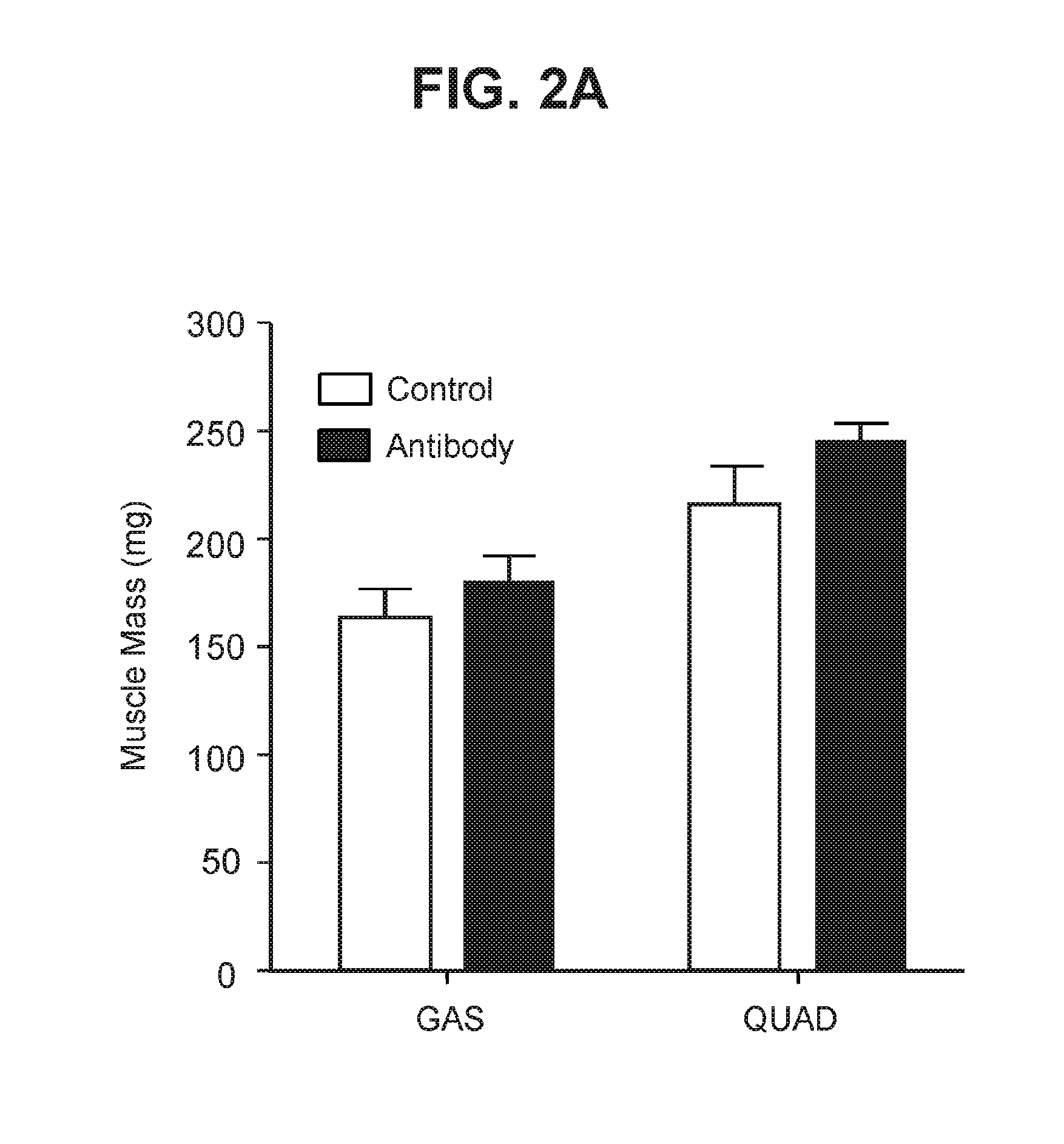Antagonist antibodies against GDF-8 and uses therefor
an anti-gdf-8 and anti-gdf-8 technology, applied in the field of anti-gdf-8 anti-gdf-8 and anti-gdf-8 and uses therefor, can solve the problems of limited clinical trials, difficult manufacturing, and limited clinical trials, and achieve the effect of improving patient performance and muscle mass or strength loss
- Summary
- Abstract
- Description
- Claims
- Application Information
AI Technical Summary
Benefits of technology
Problems solved by technology
Method used
Image
Examples
example 1
Transient Expression Analysis of OGD1.0.0 and OGD1.1.1
[0186]Transient expression of intact heterotetrameric OGD1.1.1 and OGD1.0.0 was tested in COS-1 M6 cells and demonstrated that OGD1.0.0 was expressed at substantially higher levels.
[0187]Briefly, DNA encoding VH0 and VH1 (SEQ ID NO:49 and 53, respectively) were cloned into mammalian IgG expression vectors so that the VH regions were each joined in frame with a nucleic acid sequence encoding the constant heavy regions of human IgG1 including three mutations abrogating effector function (SEQ ID NO:57) so as to express full length antibody heavy chain including VH0 or VH1. Similarly, DNA encoding VL0 and VL1 (SEQ ID NO:51 and 55, respectively) were cloned into mammalian IgG expression vectors so that the VL regions were each joined in frame with a nucleic acid sequence encoding the human kappa constant light region of SEQ ID NO:17 so as to express full length antibody light chain including VL0 or VL1.
[0188]After the expression vecto...
example 2
Stable Expression Analysis of OGD1.0.0 and OGD1.1.1
[0194]Stable expression of OGD1.0.0 and OGD1.1.1 was tested in CHO-DUKX cells. Briefly, cells were grown to 80% confluence and then co-transfected using a lipofectamine transfection reagent with 25 μg each of the heavy and light chain expression vectors (50 μg total) described in the previous example (i.e., VH0 and VL0 for one set of cells, and VH1 and VL1 for another set of cells). After transfection, spent media was exchanged with fresh R1CD1 media plus 10% FBS every three to four days while the stable pools were being established.
[0195]After stable transfectants were established, the ability of the cells to express anti-GDF-8 antibody when grown as attached cells in serum free R5CD1 media was tested. Under these conditions, the cells expressing OGD1.0.0 expressed 47.3 mg / L antibody after 96 hours of growth, whereas the cells expressing OGD1.1.1 expressed 41 mg / L antibody after 72 hours of growth. Antibodies were purified using a ...
example 3
Transient Expression Analysis of OGD1.0.1 and OGD1.1.0
[0199]Because the J segments in each of the heavy and light chain variable regions were changed, it was unclear whether either change alone might be sufficient to cause the markedly higher expression levels of OGD1.0.0 that were observed, or possibly whether both changes contributed to increased antibody expression.
[0200]To study this, applicants repeated the transient transfection experiment described above, but additionally combined VH0 and VL1 constructs in one plate, and combined VH1 and VL0 constructs in another plate, and then quantified the antibody expression levels using ELISA. The results of the experiment, which are shown in the table below, demonstrate that substitution of the JH4 for the JH3 J segment in the VH region is sufficient to confer the greatly increased antibody expression observed by applicants. Conversely, changing the kappa J segments (i.e., JK4 for JK1) did not appear substantially to impact expression ...
PUM
| Property | Measurement | Unit |
|---|---|---|
| concentration | aaaaa | aaaaa |
| temperature | aaaaa | aaaaa |
| temperature | aaaaa | aaaaa |
Abstract
Description
Claims
Application Information
 Login to View More
Login to View More - R&D
- Intellectual Property
- Life Sciences
- Materials
- Tech Scout
- Unparalleled Data Quality
- Higher Quality Content
- 60% Fewer Hallucinations
Browse by: Latest US Patents, China's latest patents, Technical Efficacy Thesaurus, Application Domain, Technology Topic, Popular Technical Reports.
© 2025 PatSnap. All rights reserved.Legal|Privacy policy|Modern Slavery Act Transparency Statement|Sitemap|About US| Contact US: help@patsnap.com



